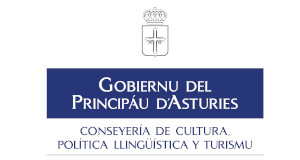The Contemporary Age




The nineteenth century in Asturies was shaped by growing industrialisation
mainly funded by foreign capital invested in the mining sector. As a result
of this investment and activity the first urban and industrial nuclei of
central Astudes were formed, centres which were to radically transform the
physiognomy of the landscape with the arrival en masse of workers from the
rest of the country and abroad. Workers' organisations, in which anarchists
and socialists were to play a large part, had their beginnings here, especially
from the time of the huelgona or great strike of 1906, and the first general
political strike, in 1917.
By the time of the proclamation of the Second Republic in 1931, Asturian
workers and miners had achieved a high level of organisation. In October
1934 the Revolutionary Movement for the Defence of the Republic exploded
on the scene, made up as much of left-wing parties as by Catalan nationalists
who felt that the Republic was indeed in danger.
This movement was only to triumph in Asturies:from the fifth to the sixteenth
of October the "Asturian Commune" was developed; workers organised
in revolutionary committees moblilised an army of 30,000 men. Given the
gravity of the situation, the government in Madrid commissioned Generals
Goded and Franco to "pacify" the Asturian territory with African
troops. After the workers' surrender and in spite of promises given, the
repression was brutal.
The October revolution was in reality the prelude to the Civil War of 1936,
in which Asturies, loyal to the Republic, was left in isolation and organised
itself into the Sovereign Council of Asturies and León, which even
minted its own currency. During the forty years of dictatorship under General
Franco, Asturies was to have a crucial role in the fight for liberty, and
the miners' strikes in the Spring of '63 were to draw the attention of the
whole world as an authentic beacon of hope amid the repression. During this
period the growth of the central region was incessant owing to the great
iron, steel and mining complexes, particularly those which were state-owned,
concentrating nearly 80% of the population in only 14% of the territory
and accounting for over 90% of the net-added value of production.
From the eighties onwards the economic model based on the monocultures of
iron and steel, mining and milk production underwent a sharp decline, and
Asturies was declared a region of traditional industry, having the highest
levels of unemployment in the whole of the European Union, which especially
affected women and young people. At the present time Asturies is coming
once again to itself through the general collective conviction that only
through a sustainable development of its potential strengths will it be
able to face up to the future.









